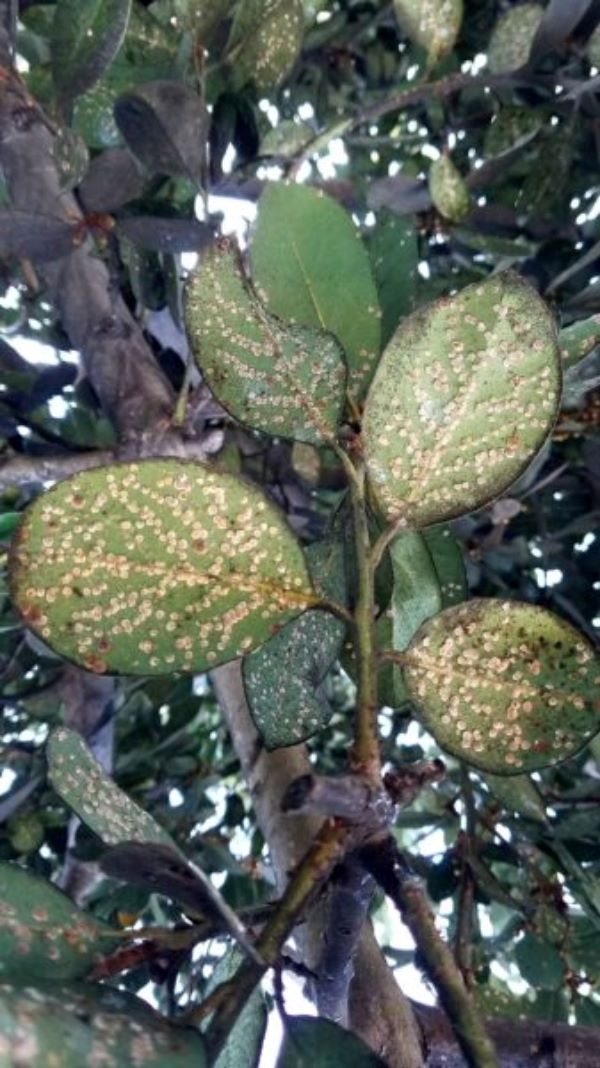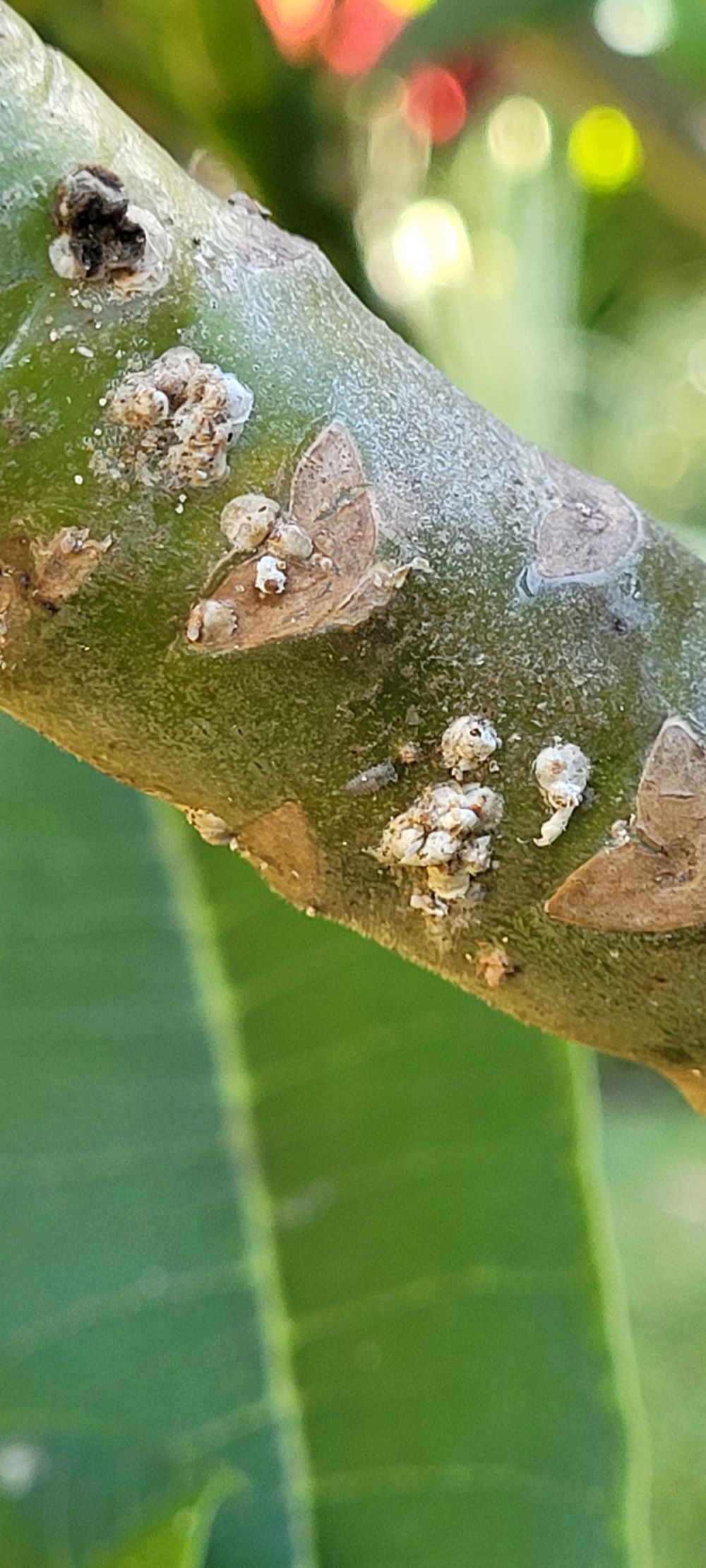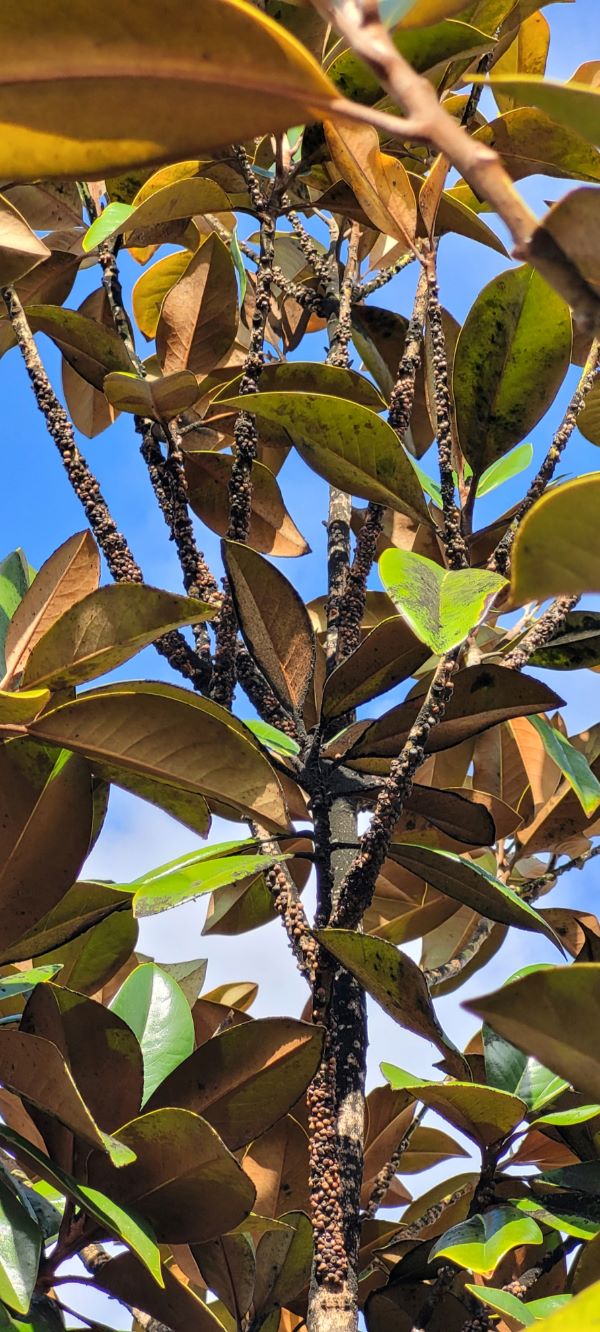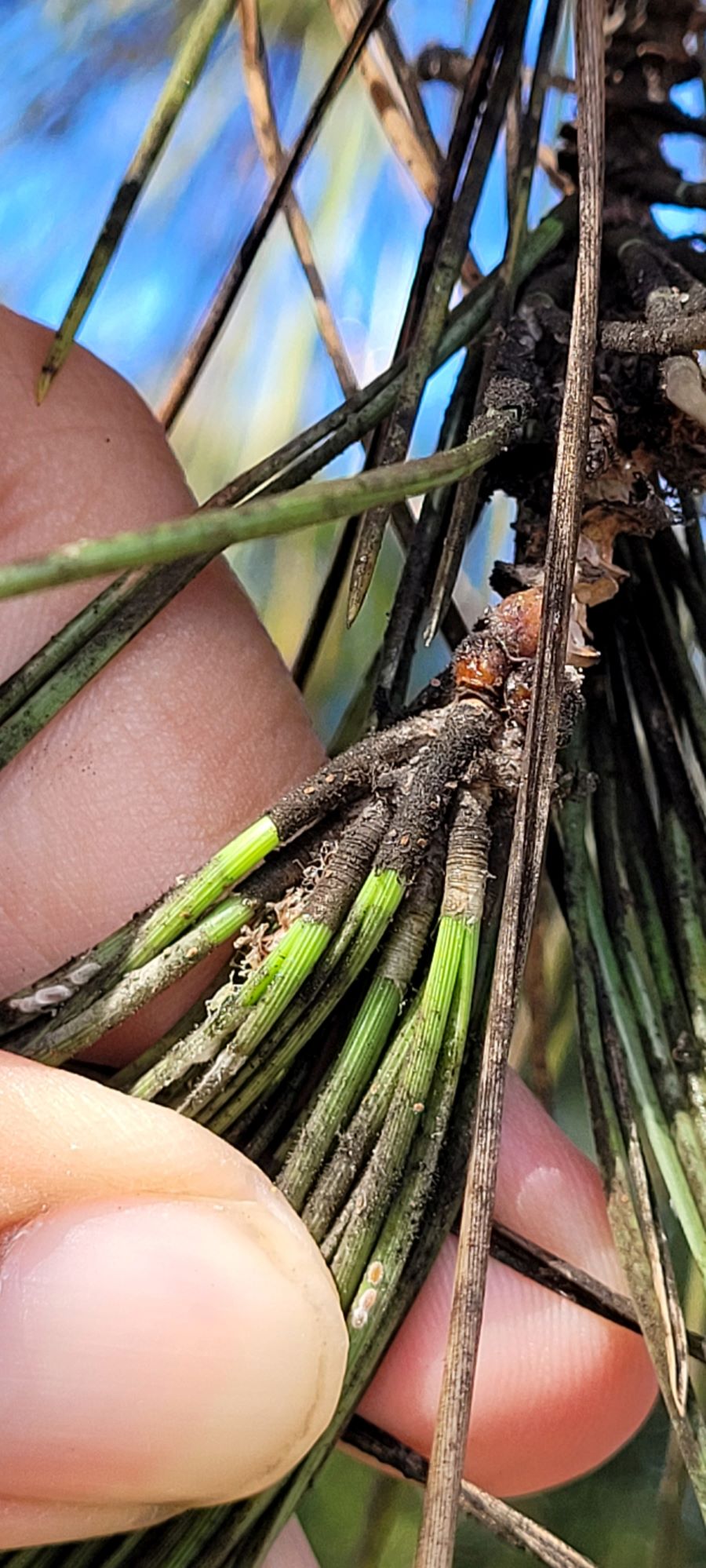Scales are immobile insects with coverings that are up to 1/4 inch long. Scales attach themselves to stems and underside of leaves and insert a tiny straw like mouth part into plants, trees, shrubs to suck fluids from the tissues of the plants. Their excessive feeding leads to a large amount of sticky residue called honeydew. The honeydew then turns into black sooty mold making leaves black and distorted. Large amounts of sooty mold will reduce plant vigor, slow growth and cause premature leaf drop. A weak slow growing plant may then become more susceptible to secondary pests or diseases.
Scale infestation varies on the species and abundance of scales. The two most common types of scales are: armored and soft. Armored Scales appear as covers that can be removed from the body and do not secrete honeydew, they are commonly small and flat. While Soft Scales are more convex with covers that do not lift off and excrete honeydew, they are commonly larger and appear as oval discolorations on leaves or bark.
How Can APC Help?
A preventative maintenance program is suggested as a treatment plan for Scale. Our recommendation is to begin in early Spring with close monitoring. Timely treatments throughout the remainder of the year are essential in the preventative program. Management includes proper plant care, always closely monitor your plants for indications of scale damage.
The images to the right display a before and after showing of a Bay Laurel with Scale. The image on the left is the damage shown before treatment. The image on the right is the Bay Laurel after treatment.
APC offers a preventative maintenance program. Please reach out with any questions/concerns or to schedule an early treatment plan for your trees and plants

Scale Damage: What does it look like?
Scales unlike other insects lack an obvious head or legs. However, their damage can be similar to that of aphids or whiteflies. Look for signs of Scale Damage such as:
- Sticky Honeydew
- Black sooty mold
- Discolored or dying leaves
- Armored scales on branches






